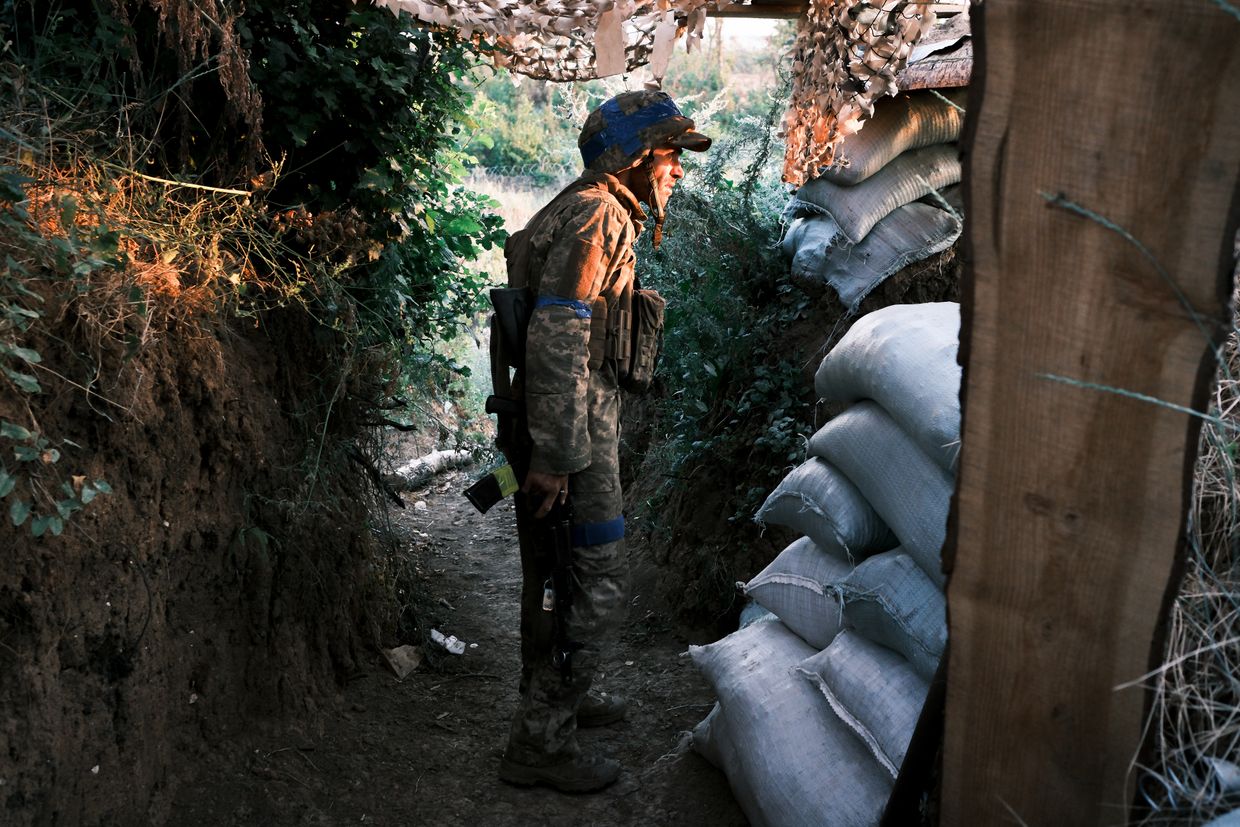Digitalization lifts Ukraine’s army mobilization efforts, but is it enough?
Support independent journalism in Ukraine. Join us in this fight.
Become a member Support us just onceBy early 2024, 40-year-old Pavlo Kovtoniuk had begun to understand that Russia's two-year-long full-scale war against his country would require him to serve in the army sooner or later. But it wasn't until two months ago that he updated his personal information with enlistment authorities - after the government launched the online application Reserv+. This new app made the process quick and easy.
It took him 10 minutes to fulfill his constitutional duty online instead of the weeks he feared the "classic process" would take with the queues and bureaucracy at the Soviet-styled draft offices. "The app really helped, because it simplified everything significantly," Kovtoniuk told the Kyiv Independent, referring to Reserv+, which allows a user to check whether their information is up-to-date - and updating at least some of it online if it's not. "Making the process of joining the reserve simple and convenient will make (more) people do it willingly," he added.
Kovtoniuk is one of the 3 million people who used the new government app during the 60 days given to military-aged men, female medical professionals, and pharmacists to update their personal data after a new mobilization law came into effect in Ukraine two months earlier.
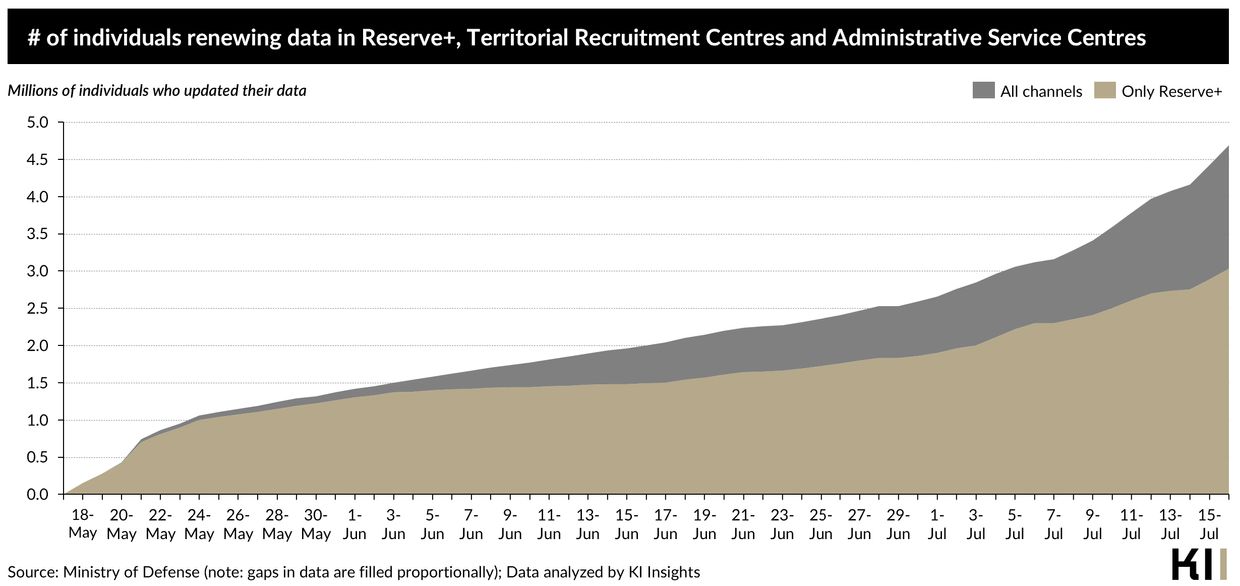
For civilians and conscripts, the enlistment centers were previously the only way to update their information, but many were reluctant to show up due to numerous allegations of abuse, corruption, and Soviet-rooted bureaucracy at the centers. Some of those problems have been reported again, after over half a million people had to show up at the centers anyway for their case to be processed manually due to the limited functionality of the Reserv+ app. By July 17, when the designated term to update personal information expired, the government boasted success, claiming it now had a refreshed database of almost 4.7 million people from which it could select more troops to beef up forces and give a rest to those exhausted by more than two years of battles against Russia's full-scale invasion.
The Defense Ministry added in its statement that a whopping 1 million had updated their data over the final week. Military experts, citing government sources, said this effort has already more than doubled the monthly recruitment rate to at least 30,000 people. However, Ukraine's draft numbers have never been officially published since the Russian full-scale invasion because it is considered a state secret.
"Offline it would have been impossible in (the designated term of 60 days)," Kateryna Chernohorenko, deputy defense minister on digital development said in a recent interview with Ukrainian media outlet Liga.net. "If 2 million people went to the enlistment centers, it would take over 200 days (to process everyone)." But these results do not immediately resolve the shortage of troops on the frontline. "The adopted law mostly deals with the registration (of potential reserves)," Ihor Romanenko, Ukrainian military expert and ex-deputy chief of the Ukrainian army's general staff, told the Kyiv Independent.
 In this photo illustration, a mobile phone shows Information about a male of conscription age in the 'Oberih' register after updating the data in the 'Reserv+' application in Kyiv, Ukraine, on May 20, 2024. (Dmytro Larin/Global Images Ukraine via Getty Images)
In this photo illustration, a mobile phone shows Information about a male of conscription age in the 'Oberih' register after updating the data in the 'Reserv+' application in Kyiv, Ukraine, on May 20, 2024. (Dmytro Larin/Global Images Ukraine via Getty Images)
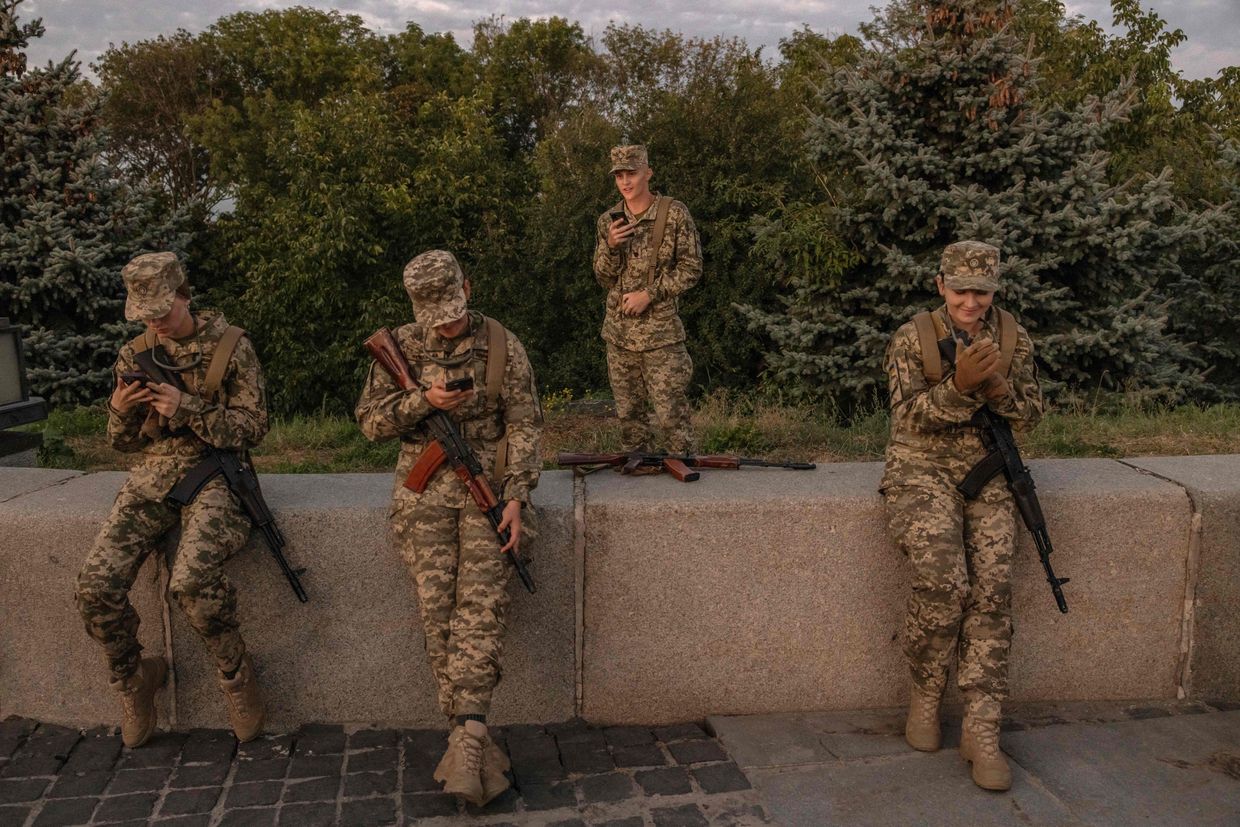 Ukrainian cadets look into their phones after a ceremony for taking the military oath at The National Museum of the History of Ukraine in the Second World War, in Kyiv, on Sep.
Ukrainian cadets look into their phones after a ceremony for taking the military oath at The National Museum of the History of Ukraine in the Second World War, in Kyiv, on Sep.
8, 2023, amid the Russian invasion of Ukraine. (Roman Pilirey /AFP via Getty Images)
"In these very difficult circumstances, we are trying to catch up with the number (of men needed to be mobilized). There has been progress, but at the moment everything is not as we would like it to be," he said. The effort to ramp up the draft shifted into higher gear after Ukraine's parliament this April adopted new mobilization legislation proposed by the government.
It lowered the minimum age of conscripts from 27 to 25 and established an online register for military-aged men - two critical adjustments in legislative changes to address the chronic troops shortage on the frontline as Russia continues its war of attrition. The new law aims to give Ukrainian authorities an expanded pool of more physically able conscripts and make it easier to find them. But lingering bureaucratic issues and evasion continue to complicate mobilization.
Nagging bureaucracy
At one army draft center visited by the Kyiv Independent, it didn't look like a newly introduced online appointment service was as successful as the app.
Instead, men in the queue wrote their names on a piece of paper for a makeshift queue, retreating to the shadows of the nearby trees until a draft officer called for a few more to enter the building. Inside, they would join over a hundred people already waiting in other queues for a chance to update their information and present their case for an exemption. "As soon as you come to the draft center, they start the (draft) process with you.
They are treating you like a soldier," said one 40-year-old man originally from occupied Luhansk. Like other men interviewed, he asked to speak anonymously, citing the matter's sensitivity. Since his personal information wasn't in the government database that Reserv+ depends on, he was forced to come to the draft center in person, like many people from the occupied territories where databases were lost or destroyed.
However, with hundreds of people in queues amid constant interruptions from air raid alarms and electricity blackouts, it had already taken him two weeks to get through the medical commission in another building, which often involves only a handful of formal questions to speed up the process. Though the man from Luhansk has the right to a draft exemption by being a father to three underage children, the commission is obligatory for any military-aged person.
 Civilian Oleksii, 34, (L) talks to a recruitment agent in a military recruitment center in Dnipro, Ukraine on May 24 2024. (Ed Ram/For The Washington Post via Getty Images)
Civilian Oleksii, 34, (L) talks to a recruitment agent in a military recruitment center in Dnipro, Ukraine on May 24 2024. (Ed Ram/For The Washington Post via Getty Images)
Almost all people interviewed by the Kyiv Independent at the enlistment center on July 18, after the end of the government-designated term, were either receiving proof of their temporary draft exemption or applying for it based on reasons defined in the law, such as having three or more children, caring for a disabled relative, or having a proven history of illness. Each case requires a list of supporting documents for a manual review by the enlistment office workers or medical commission.
"As always, some paper is missing," said Oleksiy, 39, who also withheld his surname due to the sensitivity of the matter, as he found that he needed to bring another document to submit his draft exemption request after queuing for several hours. Many men who don't have grounds to legally avoid the draft are staying away from the enlistment centers, even at risk of fines. "In my circle, only people who are ready to go fight or have (exemption rights) have updated their info," - said a draft-aged man in his 20s from Kyiv who declined to register his data through any platform for fear of getting mobilized.
Evaders face hefty fines
Estimates suggest that millions of military-aged men continue to evade the wartime responsibility of updating their army draft personal information. Starting from July 17, they face fines in the 17,000-25,000 hryvnia range, or around £400-600.
It's a sizable sum considering that the average Ukrainian monthly salary is around £530. An accurate assessment of how many military-aged men reside in Ukraine currently is hard to come by, not least because the last government census was conducted way back in 2001. Two recent estimates, one published by the Financial Times newspaper and another by Ukrainian publication Texty, put the number of military-aged men at 10 million or more.
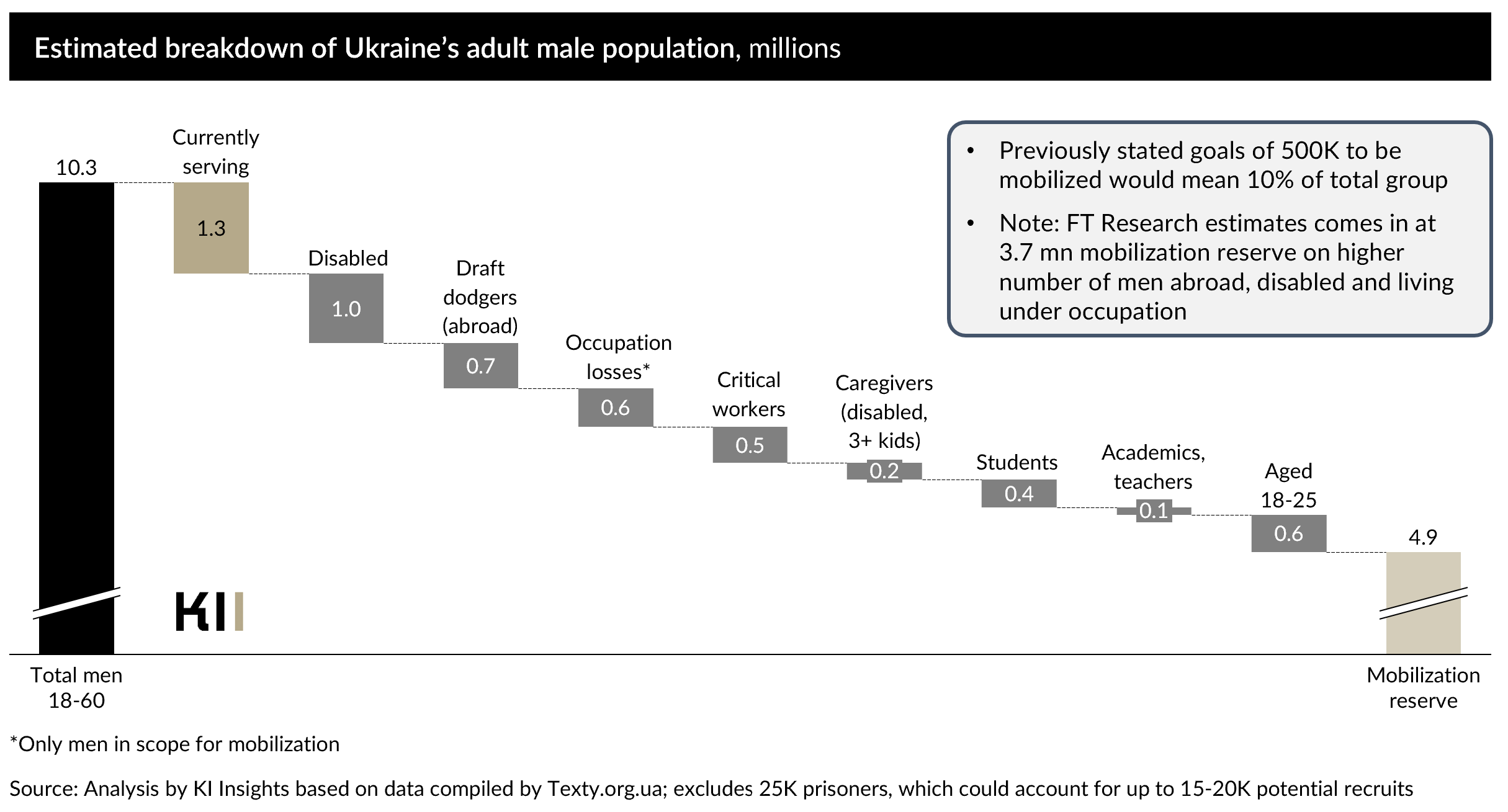
Officials say evaders won't be fined automatically.
Ukrainian Defense Ministry spokesperson Dmytro Lazutkin told Radio Svoboda that imposing a fine requires a court decision. Citing unclear legislation on the matter, lawyers predict that the process could become bogged down in legal disputes. According to publicly available judicial records, hundreds of court decisions have already been made as men challenged fines imposed on them for failing to show up to the draft centers after getting the written summons for updating their data.
Are current efforts sufficient to beef up Ukraine's forces?
According to KI Insights (KII), the Kyiv Independent's in-house research and advisory unit, just under 5 million of the total 10 million military-aged men living in Ukraine are estimated to be eligible for mobilization to the army, excluding disabled people, students, residents of occupied territories, and other groups unable to serve.
While there is no official data on what share of the newly registered 4.7 million qualify as candidates to be mobilized into the armed forces, experts estimate the amount to be between 1-2 million, with KII estimating it at somewhere around a third, or around 1.5 million. That far exceeds the biggest figure of 450,000-500,000 that Ukrainian President Volodymyr Zelensky, citing military command requests, said could be mobilized this year. Moreover, soon after his appointment in winter, commander-in-chief of Ukraine's armed forces Oleksandr Syrsky told state news agency Ukrinform this March that this figure had been 'significantly reduced.'
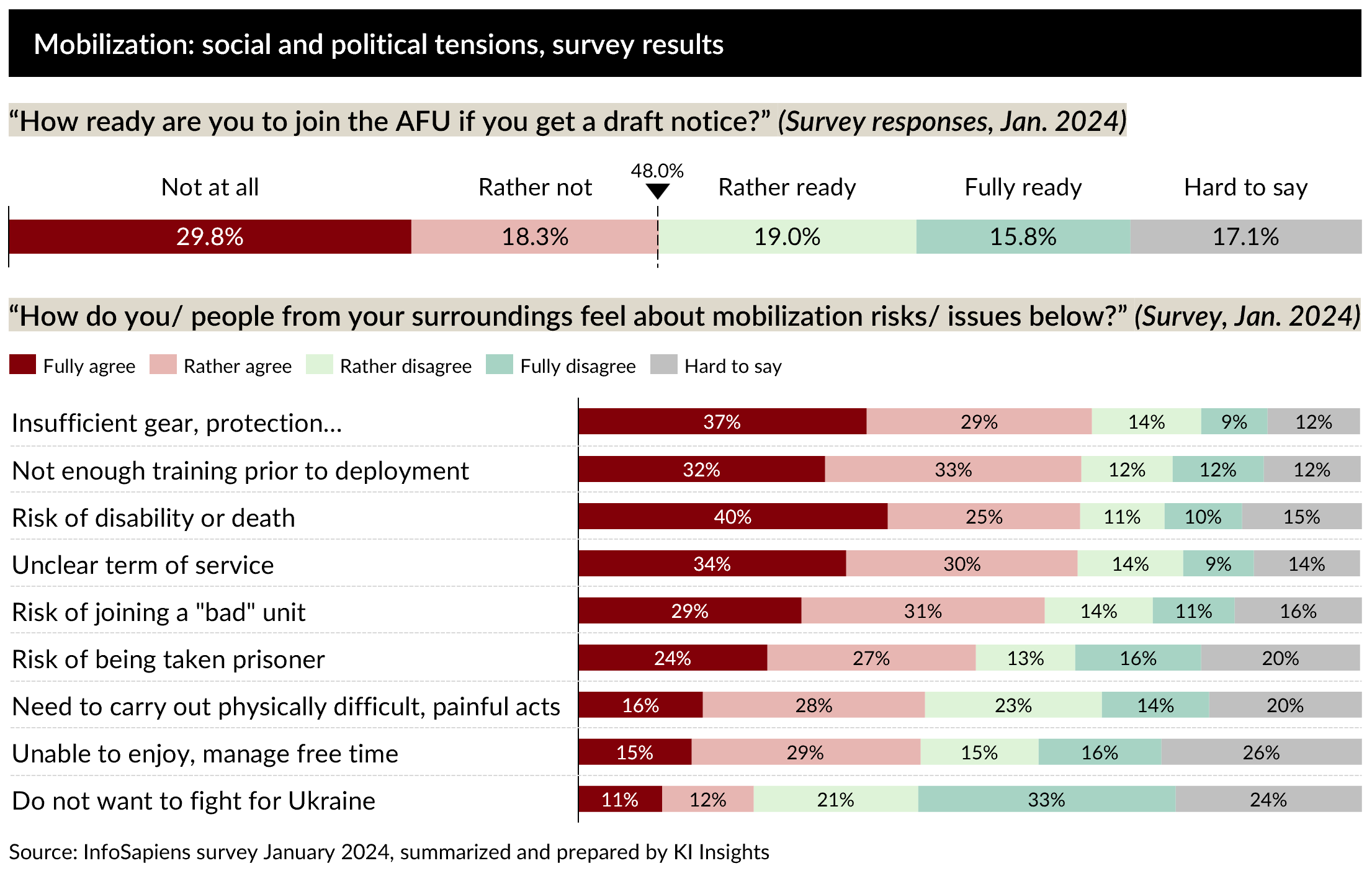
Experts said that authorities currently aim to bring at least 150,000 new recruits into the one-million-strong armed forces this year.
Even after the draft rate doubled to better match Ukraine's outnumbered forces against larger Russian battlefield troop levels, it could take months before the effect reaches the frontline. "The typical lag time when looking at basic training is four weeks, plus training done by the brigade," said Michael Kofman, a military expert at the Carnegie Endowment for International Peace in Washington. Specialized training could last from weeks to two months, he told the Kyiv Independent. "But the picture should steadily improve starting this month," Kofman added.
Eye of the storm: A day in the life of Ukrainian infantry on the zero line near Toretsk
Editor's note: In accordance with the security protocols of the Ukrainian military, soldiers featured in this story are identified by first names and callsigns only.
DONETSK OBLAST - There was already little resembling a road in front of the driver by the time the old pickup truck's headlights were
